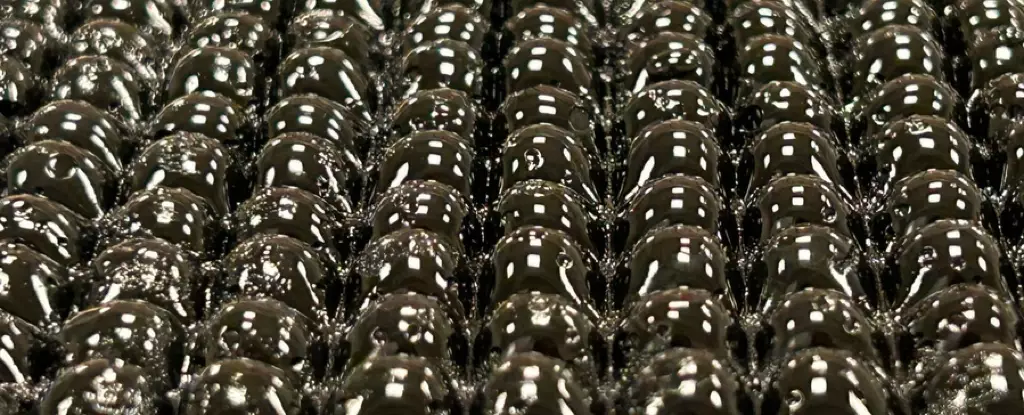Water scarcity is not just a looming crisis—it is a present-day catastrophe for billions. In a world where nearly 4.5 billion people lack reliable access to clean drinking water, technological innovation is desperately needed. Enter a curious creation: a black “bubble wrap” hydrogel that can extract water from utterly dry air without needing electricity. Developed by engineers at MIT and tested in Death Valley, this atmospheric water harvester offers an intriguing approach to harvesting drinking water in some of the harshest environments on Earth. But does this breakthrough device offer a genuine lifeline, or is it an overhyped and limited gimmick?
The ingenuity behind the device lies in its simple physics and material science. The hydrogel—made from polyvinyl alcohol, lithium chloride, glycerol, and black ink—is fashioned into bubble-wrap-like panels that maximize surface exposure to atmospheric moisture. During humid nights, the gel absorbs water vapor, which then condenses on glass surfaces during the day, allowing gravity to collect droplets. Tested in extremely arid conditions, the panel managed over 50 milliliters of clean water per day—a small but notable volume considering the lack of any power source.
The Science Behind the Mirage
While the idea sounds promising, the efficiency and scalability of this technology deserve a much more skeptical eye. Previous atmospheric water harvesters have struggled with limited yield, producing minimal amounts insufficient for meaningful relief. The MIT team’s device claims a leap forward by overcoming contamination issues common to materials previously used, such as salt leaching and toxic byproducts. However, the volume of water extracted—while nontrivial—is still minuscule for practical human consumption, representing less than a quarter of a typical daily water intake for a person.
Technological optimism is warranted, but only when matched with a realistic understanding of the device’s limitations. The harsh test environment of Death Valley is impressive, but one must ask whether such results can be routinely achieved in diverse global locations with varying humidity patterns. Moreover, the device’s reliance on specific physical conditions—warm nights and cooler days to induce condensation—restricts its universal applicability. Even the developers acknowledge that this iteration is only a proof of concept, demanding further optimization.
Accessibility and the Question of Equity
Beyond technical performance, the device’s true value hinges on whether it can be scaled and deployed in the very regions that suffer from water insecurity—often impoverished, infrastructure-poor areas lacking reliable electricity. The MIT team points out that the device requires no solar panels or power, signaling its potential in resource-limited communities. Yet, the path from laboratory prototype to accessible public health tool is treacherous and littered with unmet promises.
Manufacturing costs, durability, maintenance, and local acceptance are critical factors absent from the initial enthusiasm. The material’s lithium chloride component, while vital for water absorption, raises environmental and supply-chain concerns. Who will produce and distribute these panels at scale? Will communities facing water crises be able to maintain them or be trapped in a cycle of dependence on foreign technology and materials? These questions reflect a broader issue of technological justice, especially within the frameworks of liberal progressivism that emphasize sustainable development and equitable resource distribution.
Innovation Is Necessary But Not Sufficient
The device represents a refreshing fusion of physics and material innovation, reminding us that creative solutions to climate challenges are possible. However, elevating it to the status of a panacea is premature and risks overshadowing broader systemic reforms needed to secure water access worldwide. Investments in infrastructure, governance, water rights, and conservation practices remain paramount.
In that light, this blackbubble-wrap water harvester is best regarded as a hopeful experimental tool—a stepping stone toward diversified strategies for combating water scarcity rather than a silver bullet. Its nascent stage demands both cautious optimism and rigorous scrutiny to ensure it does not distract from the harder, essential work of social, political, and economic change needed to make clean water a universal reality.


Leave a Reply